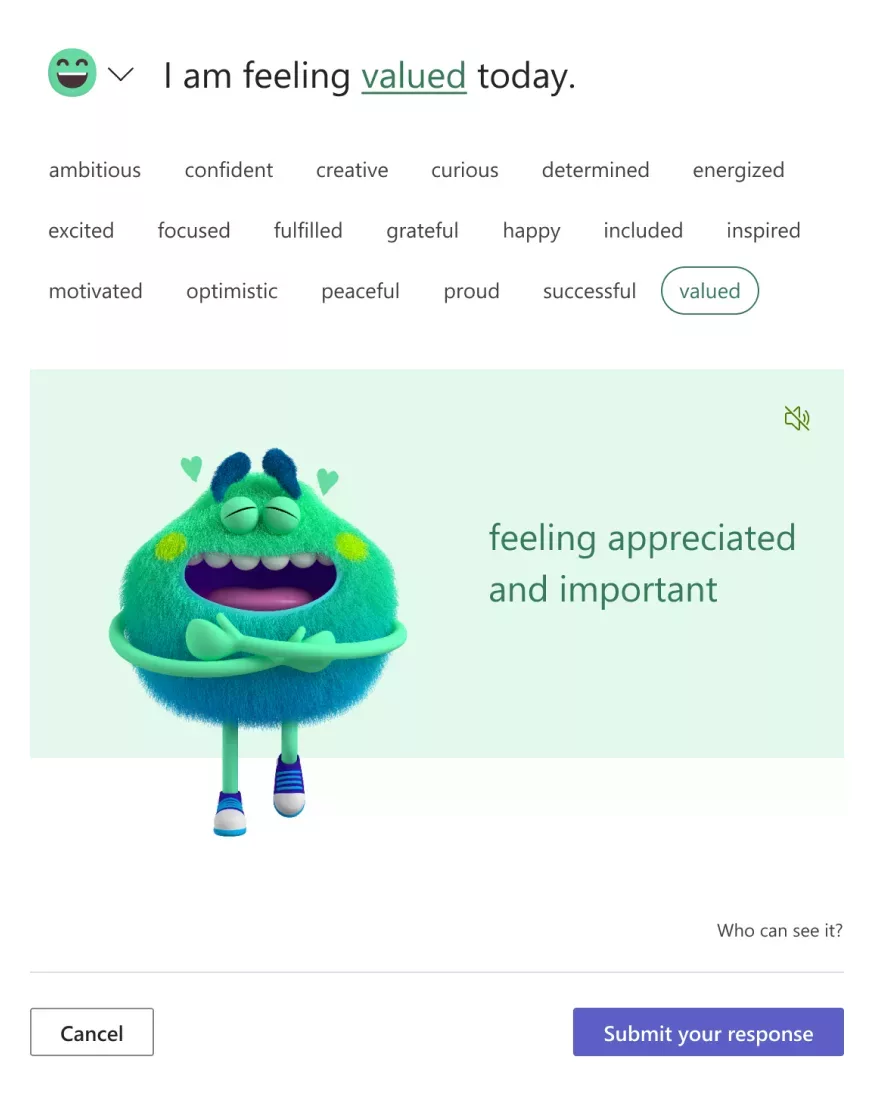It was a simple misunderstanding. The kind that marks an average day in the life of a seventh grader.
One student, in passing, overhears a comment about themselves and assumes the worst. Feelings are hurt. Resentments are born. Conflict is created. And in most traditional classrooms, unresolved.
Typically the student would have to sit in that hurt all day long, suffering silently as those uncomfortable feelings festered and intensified. As a result, they may retreat from their classmates, cut themselves off from their educators, and shut down from their studies.
But this wasn’t a traditional classroom. Instead, it embraced software that allowed students to check in with their educators about their feelings. And it gave this particular seventh grader a way to tell their educator they were feeling hurt. More importantly, the educator was able to find out why.
Within three minutes, feelings were acknowledged, apologies were made, and the incident was resolved. Students practiced managing their emotions and relationships in an informed way. All because an educator asked, “How are you feeling?”
How do you feel today?
Meet your Feelings Monster by selecting an emotion below.
Skip emotion selectionsYour emotions affect you more than you know
They guide our daily decisions and provide context to every situation. They influence how we interact with and perceive our peers and, fundamentally, how we see ourselves. They are deeply connected to our memory and give meaning to the moments of our lives.
While we all experience feelings, many of us don’t understand how they affect us, what they mean, and how to evaluate them. After all, emotions are more complex than simply being happy or sad. Researchers believe there are at least 27 distinct emotions 1 (with varying degrees that can be mixed).
And yet – many of us aren’t taught how to successfully navigate the constantly changing emotional landscape surrounding us.
93%
of educators want a greater focus on SEL in schools. 2
80%
of educators believe positive emotions are critical for academic success. 3
It’s all about emotional intelligence
Emotional intelligence is the ability to recognize, understand and manage one’s feelings while understanding and empathizing with the feelings of others. People with higher emotional intelligence are often better equipped to deal with whatever gets thrown their way, whether in their personal or professional lives.
With emotional intelligence as a significant indicator of success, it might be easy to assume that more people would have the ability to name their emotions. But evidence suggests that only about 36% of people do. 4
Why is this? Many educators and psychologists believe timing is an issue – people are far more likely to develop higher emotional intelligence when cultivated earlier. This insight has led to an increased focus on Social-Emotional Learning (SEL) curricula in many school systems.
“SEL is the process through which all young people and adults acquire and apply the knowledge, skills, and attitudes to develop healthy identities, manage emotions and achieve personal and collective goals, feel and show empathy for others, establish and maintain supportive relationships, and make responsible and caring decisions.” 5
– Casel.org
As the demand for more SEL curricula grows, so does the need for tools to help educators and students with its implementation.
Why is this? Many educators and psychologists believe timing is an issue – people are far more likely to develop higher emotional intelligence when cultivated earlier. This insight has led to an increased focus on Social-Emotional Learning (SEL) curricula in many school systems.
“SEL is the process through which all young people and adults acquire and apply the knowledge, skills, and attitudes to develop healthy identities, manage emotions and achieve personal and collective goals, feel and show empathy for others, establish and maintain supportive relationships, and make responsible and caring decisions.” 6
– Casel.org
As the demand for more SEL curricula grows, so does the need for tools to help educators and students with its implementation.
Making a (Feelings) Monster
What if your emotions changed the color of your skin? You radiate green after acing that pop quiz. When you get overwhelmed, you turn orange. When you’re scared, you turn pink. Would that impact how you understood emotions?
Meet the Feelings Monster, a furry character that lives within the educational app Microsoft Reflect and serves as a check-in communication tool for educators and their students. The app allows students to improve their emotional intelligence.
Through color, body language, emojis, and verbal definitions, Reflect provides access points to identify one’s emotional patterns. By offering a deeper selection of emotions to choose from, students begin to develop a more comprehensive emotional vocabulary, become more adept at identifying uncomfortable emotions and develop the skillset to mitigate them. Learn more about designing The Feelings Monster.
The Feelings Monster gives educators a real-time snapshot of how a student actually feels versus how they present themselves.
Select a photo to reveal their Feelings Monster
From kindergarten to university, educators feel the impact
Normalizing emotional intelligence in elementary school:
“Just like they’re going to class to learn how to do math, they’re going to class and sharing their feelings.”
Melinda Moody, Digital Learning and Teaching Facilitator, Northwoods Elementary, North Carolina
Making it easier for middle and high school students to share:
“A lot of times students don’t know what the feelings are or how to identify them. Being able to associate their feelings with that monster is incredibly helpful. It’s also helping us understand…to know where we are.”
Erin Holland, Digital Learning and Teaching Facilitator, Swansboro Middle School, North Carolina
University students have big feelings, too:
“I’ve been surprised at the impact Reflect has had on my adult students. It’s clear that having a supportive outlet to share feelings with their professor has positively impacted the class environment.”
Ivano Eberini, Associate Professor of Biochemistry, University of Milan
I’ve heard from teachers that using the together view—which shows all the monsters in one place—really informs how they approach instruction.

Students respond to educator check-ins with emojis and illustrated representations of emotion words.

Together view gives educators a quick snapshot of how their entire class is feeling.

Students can monitor their past check-in emotions and the associated Feelings Monster.
Imagining Gen-E: A generation raised on emotional intelligence
What would our world look like if it was run by people raised to be emotionally intelligent? What might society look like if the percentage of people who could successfully name their emotions rose from 36% to 50% or even 100%?
How would we approach our most pressing challenges like climate change, school shootings, and mental health?
While we don’t have the answers, we can begin to imagine the possible outcomes. What might happen when a generation learns from the earliest of ages to focus on social and emotional skills like self-awareness, self-reflection, and empathy – It is a future where feelings come first.
Teachers, educators, or parents can learn more about Microsoft Reflect and the Feelings Monster.
Get the Feelings Monster

References
- Cowen, Alan S. (). Self-report captures 27 distinct categories of emotion bridged by continuous gradients. Proceedings of the National Academy of Sciences (PNAS). Retrieved from https://www.pnas.org/doi/abs/10.1073/pnas.1702247114
- Collaborative for Academic, Social, and Emotional Learning (CASEL). Casel Study. Casel.org. Retrieved from https://casel.org/about-us/
- The Economist, (). Emotion and cognition in the age of AI. The Economist. Retrieved from https://edudownloads.azureedge.net/msdownloads/emotion_and_cognition_ai.pdf
- Bradberry, Travis. (). Are You Emotionally Intelligent? Here’s How to Know for Sure. Inc.com. Retrieved from https://www.inc.com/travis-bradberry/are-you-emotionally-intelligent-here-s-how-to-know-for-sure.html
- Collaborative for Academic, Social, and Emotional Learning (CASEL). Casel Study. Casel.org. Retrieved from https://casel.org/about-us/
- Collaborative for Academic, Social, and Emotional Learning (CASEL). Casel Study. Casel.org. Retrieved from https://casel.org/about-us/
































































